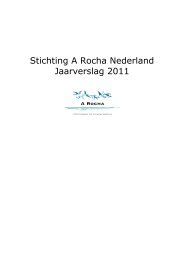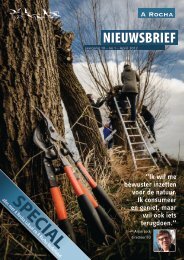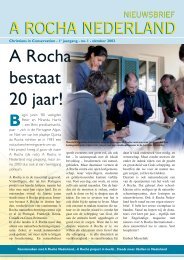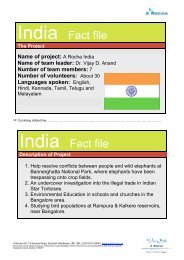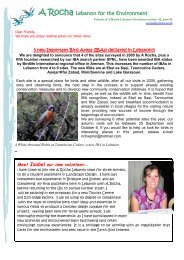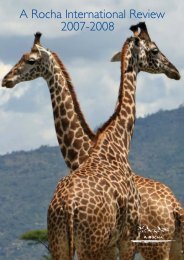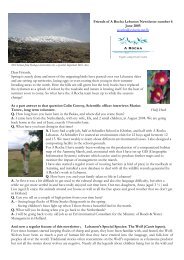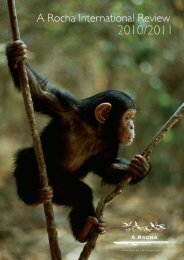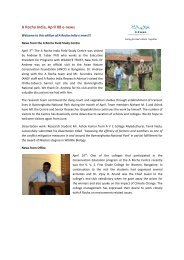A Rocha Portugal Observatory Report 2009-2010
A Rocha Portugal Observatory Report 2009-2010
A Rocha Portugal Observatory Report 2009-2010
Create successful ePaper yourself
Turn your PDF publications into a flip-book with our unique Google optimized e-Paper software.
24 A <strong>Rocha</strong> <strong>Portugal</strong> <strong>Observatory</strong> <strong>Report</strong> <strong>2009</strong>-<strong>2010</strong><br />
Heleno (2004). The length of time spent at each site was equal for each visit and across all the years as also<br />
prescribed in Hayden & Heleno’s methodology (2004; 2005).<br />
The number of breeding pairs was estimated by counting the number of territories which were apparently<br />
being defended. An apparently held territory (AHT) was counted if a bird was sitting on a nest, the presence<br />
of chicks, more than three occurrences of territorial behaviour at the same location across different dates,<br />
or two occurrences of territorial behaviour with supporting non territorial behaviour (Hayden & Heleno,<br />
2005).<br />
Wader counts were conducted every fortnight on the Ria de Alvor estuary at high tide. These surveys cover<br />
both the western marsh and western marsh salinas. These counts have been carried out from 1999 to <strong>2010</strong><br />
by staff and volunteers at A <strong>Rocha</strong>. The maximum count utilised within this report is taken from surveys<br />
carried out in April, May or June to coincide with the Kentish plover breeding period.<br />
Results<br />
The number of apparently held territories declined throughout the period from 53 in 2004, 43 in 2005 and<br />
finally 30 in <strong>2010</strong>. Similarly the number of birds seen sitting and the number of juveniles also declined. The<br />
number of adult individuals shows greater variation from 344 in 2004 to 84 in 2005 (Figure 1). The <strong>2010</strong><br />
figure (178 adult individuals) was between the numbers found in the two previous studies.<br />
Figure 1 The total numbers across the last five visits of individuals (adults), juveniles, apparently held<br />
territories and sitting birds. The last five visits are used so that all the years are comparable.<br />
There is a significant difference in number of individual Kentish Plover over the years between the different<br />
sites studied (Figure 2). In all four measures (number of individuals, sitting birds, juveniles and AHTs) the<br />
Western Marsh showed greater abundance than the other sites, however it also showed the greatest<br />
decrease from 2004 to <strong>2010</strong>. The Western Marsh Salinas have generally shown the least decline over this<br />
period, and actually showed an increase or the same result in three of the measures.<br />
In <strong>2010</strong> the number of sitting birds in each site correlated significantly with the number of AHTs<br />
(Spearman’s rank, rs= 1.6, d.f=3, p




